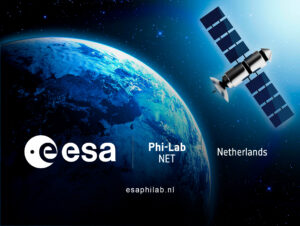ESA Phi-LabNET is the European Space Agency’s network for innovation, designed to bring research closer to commercialisation by bridging disruptive research and commercial needs. Phi-LabNET translates cutting-edge research to entrepreneurship success across a range of domains including earth observation, artificial Intelligence, quantum computing, in-orbit servicing, secure communications, and more. Through its regional hubs, such as ESA Phi-Lab Netherlands, it empowers researchers and entrepreneurs to turn bold ideas into real-world impact. ESA Phi-Lab Netherlands is operated by NL Space Campus and SBIC Noordwijk and supported by Netherlands Space Office.
The first project consortium selected to receive funding and support through ESA Phi-Lab Netherlands is headed by Dunedain Space. Recently, Elena Quinteros from NL Space Campus sat down with Ignacio Reyes Raffo, CEO and co-founder of Dunedain Space, to discuss the consortium’s journey so far, what drives their mission, how the Phi-Lab programme helps accelerate their development, and what lies ahead.
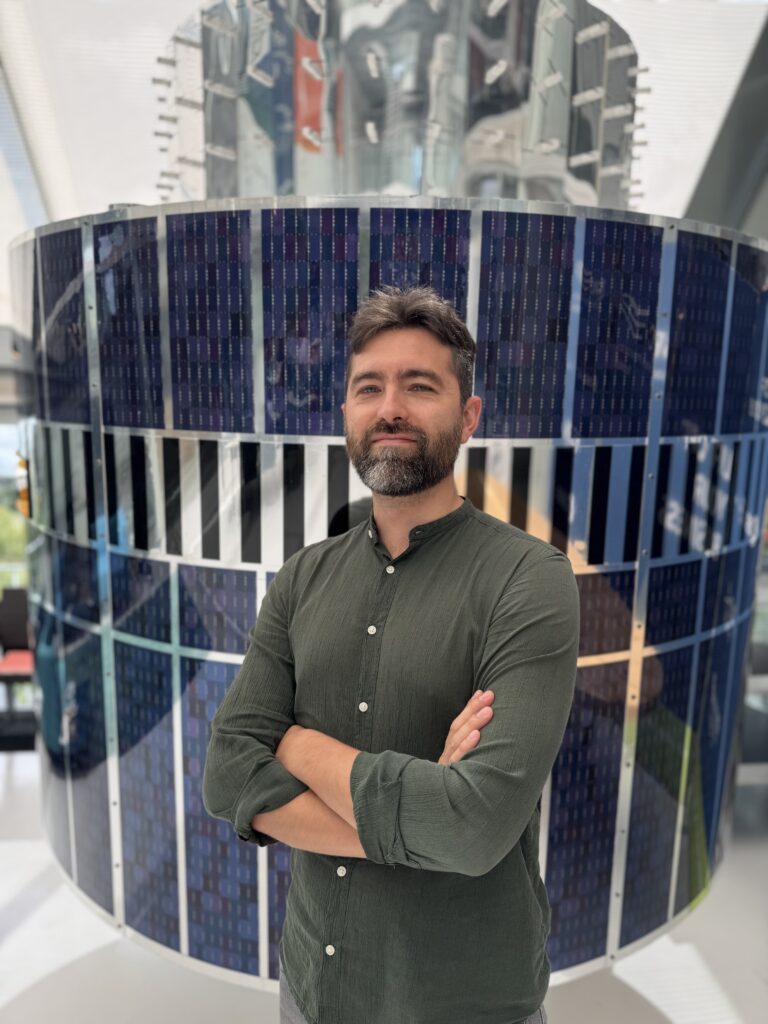
Journey to ESA Phi-Lab
Let’s start with your story. Can you tell us a bit about yourself and what led you to apply for the ESA Phi-Lab initiative?
I’m a theoretical physicist. I did my PhD in theoretical physics in Würzburg, Germany. I completed my first postdoctoral position at the Max Planck Institute in Potsdam, Germany and then moved to Amsterdam, the Netherlands, for my second postdoctoral position at the University of Amsterdam. I spent a considerable amount of time studying theory, and eventually, I developed a desire to work on more applied topics that would have a greater impact. The academic system had too many boundaries, and things were moving too slowly; I didn’t feel that people were taking risks or trying new things. Many interesting developments were happening outside of the academic system, particularly in the private sector and the space industry. There are so many exciting things happening.
Last year, I completed my position at the university and decided to become an entrepreneur, to give it a try. Since it’s closely related to observational astronomy, I eventually focused on Space Situational Awareness. I attended seminars, spoke with people, and took some entrepreneurship courses. I revisited some research ideas on new optical techniques for satellite detection that I had learned about previously, as academic work that was still under the radar but clearly had the potential to develop into a business. That connection between science and application really drew me in. I slowly started meeting people and looked for ideas on what I could work on. Eventually, I met an investor who decided to support me. We started a company together and, in the process, I also learned about the Phi-Lab which seemed like a very promising proposal because it wasn’t just a commercial venture. It had a significant research component, focusing on how to apply research to building commercial technology. That’s how I heard about it. Then, I started talking with the people involved. It sounded exciting, so we decided to apply, and it went well.
How did you find out about ESA Phi-Lab?
It was my investor who was aware of this. I had not been aware of it before. I was familiar with SBIC Noordwijk and its ESA BIC programme, so I was also aware of incubation. One thing that brought me here is that at some point, I was invited by Martijn Leinweber to join the SBIC-community for a month. And then I started to know more people, which also brought me closer to the various applications and grants involved, as well as the startups, and I began to meet new people. That was very useful.
What inspired you to start the company? And what are your long-term ambitions for it?
Yeah, that’s a good one. There are different levels. Some of them are short-term or medium-term, while others are longer-term. On a broader scale, we aim to develop new technology by bringing together knowledge and expertise from diverse scientific backgrounds, including astronomy, physics, mathematics, and computer science, to advance space exploration. So, we’re not trying to copy what other people are doing. We’re not trying to get caught up in the rat race of things that are already known. We’re trying to do things that are not well-known, not being done, or not being thought about by many people.
So, we’re using a variety of techniques ranging from Astrodynamics to Photometry and AI and applying them in the area that we are working on, which is space situational awareness. We aim to excel in detecting, tracking, and monitoring objects that are currently difficult to locate in Earth’s orbit, utilising techniques that differ from those employed by others. We aim to achieve this and have a successful, healthy company as a result.
In the long term, I aim to support, help, and contribute to the broader exploitation of space. It’s great to see the broader exploitation of space gaining renewed attention from the EU and building momentum once again. If we could contribute to that and inspire, especially young people from the sciences to enter companies and start-ups and build useful things for space then I would be very happy.
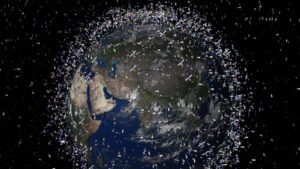
Applying Science to Space Situational Awareness
The project’s aim is to use state-of-art science to develop technology to identify and monitor objects that are currently difficult to locate in Earth’s orbit. Could you be more specific, such as providing an example of one of these?
Yes, people have probably heard that the number of objects in orbit is increasing at an extremely rapid rate. Within only a few years we went from a few thousand to more than ten thousand space objects in orbit. Now, with the advent of mega constellations such as Starlink, people become more aware that the number of satellites and space objects in general is growing very fast.
It’s getting very crowded up there, but that is also a good thing: All these new assets can help us with navigation and communication. It’s beneficial for climate observation and various other purposes. But that also introduces more traffic. Space is like a highway where these satellites travel extremely fast. And that creates traffic. And that makes a dangerous possibility of collisions, among other things. There are various institutions, governments, companies, and other entities that provide the service of tracking objects in orbit, employing different techniques. What we are focusing on are those blind spots left by these players. The standard methods are unable to track everything, either because some objects are too small, such as space debris, or they’re travelling very fast, have unusual orbits, exhibit anomalous behaviour, or are very dark. There are different blind spots. We’re trying to produce new technology using science from astronomy, physics, and AI to fill in those blind spots.
To address the issues that you cannot currently see, you want to make them visible and trackable. It seems essential, especially since you mentioned it is becoming crowded.
Yeah, it could become essential. It’s not going to stop the numbers coming to space. They will only keep increasing significantly, and plans are already underway for expanding and new major constellations. Whether it’s satellites, space junk, any type of floating objects and debris as a result of explosions or collisions, the consequences are numerous. There are many reasons why we want to know more about the effects of those many objects that keep growing in number and their interaction.
Can you walk us through the project? What are you and your consortium aiming to achieve, and why does it matter?
Traditionally, astronomy utilises a specific type of sensors in telescopes, typically designed to detect objects that are very distant and faint. That means you use sensors and cameras with very long exposure times. They’re very slowly operating cameras. You may want to see a galaxy that is very far away. We are working in the opposite extreme of the time scales. We are researching certain types of sensors, some of which have nothing to do with astronomy. Detectors and cameras used in entirely different aspects of scientific domains like quantum science raise the question of how we can repurpose them to achieve our goals. It’s particularly relevant to astronomical instrumentation and optics, one of the key areas of research in the ESA Phi-Lab Netherlands.
Do you have a specific timeframe in mind for achieving those goals in this project?
Yes, in our case, with the Phi-Lab we agreed upon for a 16-month contract. It’s divided into several work packages, and we have different milestones that we need to achieve. Currently, our team is replicating known techniques in SSA using standard astronomical instrumentation. This is the first step: reproducing what is known. And we’re getting now to the boundary of what that can achieve. Within the next couple of months, we will start exploring a different type of sensor. It might take another six months for us to properly understand how these sensors work and how they interact with our telescopes, and then we need to calibrate them. There are many things that you need to do. Research stuff sometimes takes long.
How important is your academic or research background in shaping this project?
It’s essential. One of the main things that I learned doing research in the academic world is that you should choose a general area where you’re going to work that you’re interested in. And in that area, the art is to find a particular problem that is, on the one hand, difficult enough that has not been solved yet. So, it is an interesting problem to work on. But it’s also not a trivial problem that anyone else can solve. It is approachable, and you believe you can make progress, find a solution, and ultimately achieve a breakthrough. Identifying these areas, techniques, technologies, or problems where you can see this balance is an art. This is the art of research, a task that is both difficult and challenging, yet fascinating.
Sometimes, the path is very nonlinear, and you need to take many detours. Often, it turns out that the most interesting finding is not exactly what you’re aiming for at first. Still, something close to it that often is much more interesting than what you thought at the beginning, that is more useful. I would say that, more than anything, maybe it is that that skill of being able to be understand what the state of the art is and what people are doing, what is known or not known, and trying to identify those difficult but solvable problems.
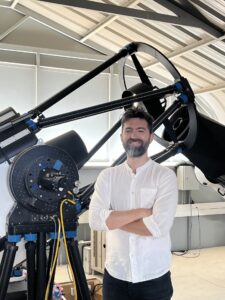
Building Networks and Accessing Opportunities
How do the different partners in your consortium – students, supporters, and investors – contribute, and what’s the added value of the financial support?
Our first master student is about to begin his internship with us. Young minds often bring the most energy, creativity, and daring ideas, which makes us very excited to have him on board. At the same time, our partnerships have been instrumental in shaping the project — helping us refine the technical side, validate the market, and identify the right applications for our research and technology. And of course, none of this would be possible without the financial backing we’ve received: the early trust of our angel investor, and now the support of the ESA Phi-Lab grant, which makes it possible to fund research hours, secure the equipment we need, and turn an idea into a working proof of concept.
In that sense, it feels like you have more time to explore this, but do you think there’s more pressure now that you are bridging research to what in the end will be a technology for your company?
Definitely, yes. Now, this is a massive thing for me, at least from the research side. I understand I need to change my mindset. I’m not just a scientist working for a university where projects can take forever. But in the case of a company, we need to develop prototypes, prove we can do things, and create valuable products that people want and need in the market. But this is also part of the research. A significant part of the research that a Phi-Lab project entails is to find that fit between potentially promising technology and market needs. So, sometimes I need to switch hats from scientist to business owner in the process.
What is the role of your main academic partner, Radboud University?
Well, although I will lead most of the research, Radboud University provides crucial scientific support. Their team led by Marc Klein Wolt brings deep experience in interpreting astronomical data and in understanding transient phenomena. They will add to the project’s academic credibility, and at the same time help validate our methods, contribute insights, and keep us connected to the wider research community. This partnership ensures our results are both reliable and embedded in the broader context of Dutch and European astrophysics.
I want to include Pedro Lacerda, the scientific coordinator on the ESA Phi-Lab Netherlands team in this interview because I’m curious about how Phi-Lab contributes to that aspect of the project. Does the Phi-Lab offer mentorship or support in that area?
(Pedro) I serve as the scientific coordinator, so I am directly involved in the scientific aspects. However, in our local Phi-Lab team, we also have Raoul Voeten, Marc Sandelowsky, and Parya Pasha, who are more oriented towards the commercial and business aspects of things. Marc, for example, offers more strategic advice. Raoul knows a lot about the market and understands where the needs lie. Parya is an experienced programme manager for complex programmes, has an extensive academic and EO network and her own track-record as founder of a space company.
Our Phi-Lab here in the Netherlands is special compared to others in ESA’s Phi-Lab network across Europe. We mobilise an extensive network of partners, including academic institutions, universities, technology partners, and research institutes such as TNO, as well as commercial and community partners. Our goal is to bring these diverse organisations together and organise events that facilitate interaction and networking among all involved and create the right support for the participating projects.
Ignacio realised the importance of building connections during his first month here, and we aim to do the same on a national scale by attracting people to our community. A significant part of the support we provide to Ignacio involves identifying potential partners for him. If Ignacio has a specific need, we may introduce him to someone in our partner network who can assist him. This way, he can start discussions and discover new tools or resources he might not have considered before. Ultimately, when we see that people are looking for solutions, we want them to think, “Oh, my tool could be helpful in this situation.” That’s the approach we’re taking.
It’s great that this you can get support and get involved in the network immediately.
(Ignacio) It’s essential, as there are many events that ESA organises here, as well as at the NL Space Campus. It was actually at one of those events that I eventually met my co-founder and investor, Paul Veger, which was a massive thing for me. So, being part of the Phi-Lab is not just about securing a grant; it’s also about gaining access to a network and receiving additional support. For example, there’s the Ignition Programme, which is specifically focused on business, nothing about technology, and that is also very useful.
(Pedro) Yes, SBIC is a key partner of our Phi-Lab, and they organise extremely useful things like the Ignition Programme. Other events are organised directly by NL Space Campus who coordinate the Phi-Lab. Other partner institutions also organise events, as well as training programs and mentorship programs, which are very important. That is something I also learned from being involved in the Phi-Lab, because I also don’t have a background in business. I attend these events, listening and understanding how people talk and exchange information, because it’s very different from the research world. Researchers are very good at communication. We attend several meetings and communicate with each other frequently. Still, the level of interest and the motivation behind these conversations are very different and so is how you navigate them. In the research world there’s no business involved so there is less secrecy. You want to share what you’re working on, as it’s a community practice of exchanging knowledge. In business there are slight nuances to this, and we learn them by observing how this network works.
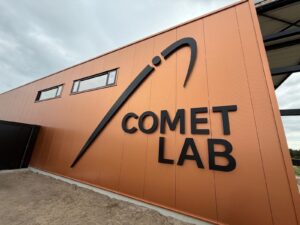
From Spark to Consortium: The Role of Phi-Lab
Phi-Lab emphasises the research aspect of innovation. How central is research in your project, and what new insights are you hoping to unlock?
Research is a fundamental part of our project, and it is also a key component of my company. Again, we don’t want to compete in a rat race. We want to create something that no one else is doing, and that’s what research means. We need to discover some new techniques. It requires research, which we are doing in collaboration with the RadioLab of Radboud University, our academic consortium partner, as well as Leiden University. You need to investigate what other people are doing. You need to do some theory, but you need to do a lot of practice. You need to build prototypes and test those prototypes. So, it’s a very big thing.
One of the things that ultimately attracted me to the Phi-Lab was that they have, at least here in the Netherlands, three key areas that are relatively broad. There was Earth Observation, laser communication, and position, navigation, and timing. That sets the direction of priorities. And what I found interesting, maybe even unique, is that they are looking for ideas, for promising ideas that might be disruptive, and this means something that other people are not doing, that are coming from the research, whether that’s universities, institutes, etc. and that potentially have a fit with the market.
Phi-Lab is not asking you in advance to have customers signed-up and ready for a commercially available product, nor is it asking you to have a business model ready. Suppose they see that you have a scientifically oriented research proposal for something that may become a disruptive technology. In that case, they’re going to back you up and help you along the way to complete these other necessary tasks.
So it’s like a bridge, they give you the time to research and develop. And whenever you’re ready, you can also ask for support in the commercial area. How is Phi-Lab helping you get to where you want to go, both with this project and in the broader journey of Dunedain Space?
(Pedro) One thing that would be interesting related to that is the journey from, as you said, a year ago or a year and a half ago, when you were an academic at the university. Then you decided to create your startup. You met an investor. You created a consortium. So, in this path, what is the role of this Phi-Lab? Is it an initiating role? What role does this play in your path, in your career trajectory?
The spark is the moment when I quit academia and decided to become an entrepreneur and build a consortium to create a business proposition. We started the company with a co-founder, but then I found the Phi-Lab, in my case, and this might be different for other people and organisations. Still, the Phi-Lab was the thing that came immediately after the spark: you need to get the fire going, and that’s how I feel about this. On the one hand, they helped me with the business side, which is not my background, so that’s extremely useful for me. I know I indeed needed it as someone coming from a completely different area. Second, they give you the grant and helped to form the consortium. That’s the funding that provides the resources to work for, in our case, one and a half years.
And last but not least, it gives you the confirmation that you need, like something that solidifies what you’re talking about, something like that. It’s a validator. It validates the work we’re doing from a completely external entity, such as ESA. Because we’re not part of ESA. We came here, we proposed a project, and among many other applications, they chose us. It provides a seal of approval, which is a significant validation that gives you a boost of confidence.
(Pedro) And the perception is that when you talk to other people, the fact that you have this on your CV also lends credibility.
It gives us internal validation when we see that there is interest in what we’re doing. There’s also external validation when people see that ESA decides to support us.
Yes, absolutely. And I think that it seems that for you, it started relatively recently, like the stars were aligned, to say, because you didn’t start your own company a very long time ago.
We incorporated it in March. We’ve just started, and we’re already here with great partners in the ESA Phi-LabNET network. So, for us, it was precisely the right time that we needed it. Going from the initial seed funding from an angel investor to work on our research, bridging the gap to the next round with bigger investors or venture capital.
Well, this is a nice way to conclude, and congratulations again. Thank you for sharing your story. Your motivation is very inspiring, and I wish you great success on your journey.
Thank you. Yeah, I’m very grateful for NL Space Campus in general. These people and the team from Phi-Lab are amazing. And it’s already a lot of fun.
Interview by Elena Quinteros, MarCom advisor at NL Space Campus, with support from Pedro Lacerda, Scientific coordinator at ESA Phi-Lab Netherlands.
Submit your idea!
The call for proposals for ESA PhiLab NL is now open. Researchers, startups, and innovators are invited to submit their ideas that contribute to advancing space innovation and technology. Proposals can be submitted until 12 September 2025 via www.esaphilab.nl
More about ESA Phi-LabNET: https://commercialisation.esa.int/phi-labnet/
More about ESA Phi-Lab Netherlands: https://www.esaphilab.nl/
More about NL Space Campus: https://www.nlspacecampus.eu
